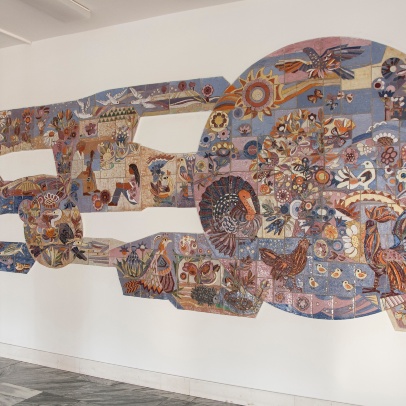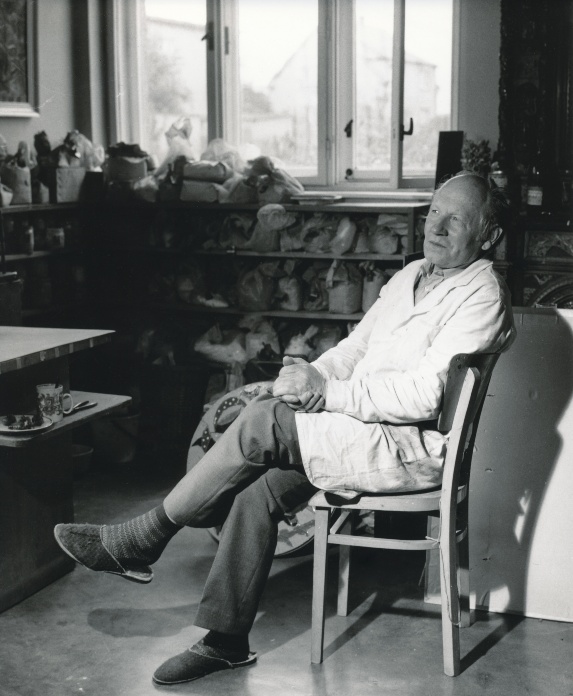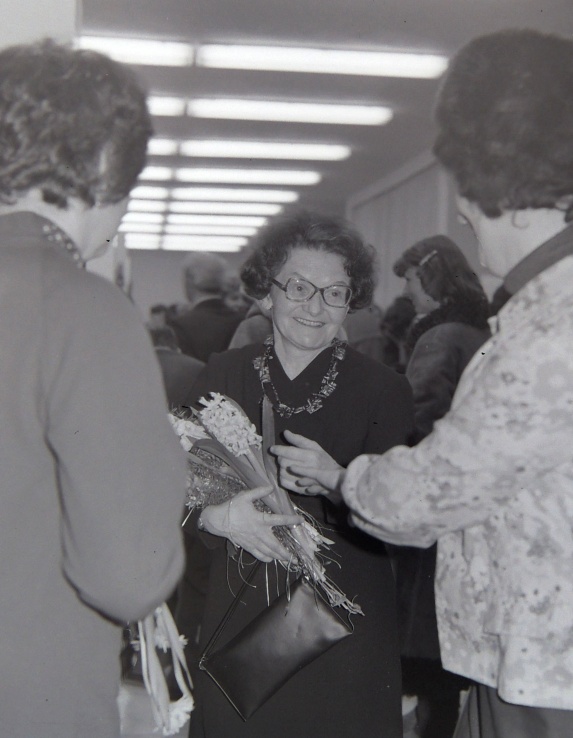Name: Youth, Life, and Nature
Author: Eva and Bohumír Krystyn
Dating: 1987
Location: in the interior on the front wall in the entrance hall of the VŠB-TUO cafeteria
Execution: a relief mosaic made of glazed ceramics, 210 x 980 cm
A FANTASY VIEW INTO THE WORLD OF NATURE
It was in 1987 when the Krystyn couple created the last of their joint realization for the new building of the University cafeteria. Initially, Eva Krystynová was awarded the contract for a large-sized decorative wall (almost 10 m long) with the subject of Youth, Life, and Nature for the entrance hall of the building. However, she had died before completing the contract, and, therefore, her husband Bohumír had to finish the work. While the small reliefs for the bar in the VŠB-TUO halls of residence had a direct relationship to the subject of youth, the relief mosaic in the cafeteria, although it has the word “youth” already in its name, does so indirectly. Only four scenes – swimming in the sea, windsurfing and meeting in the countryside with a book or a guitar – have a direct relationship to the lives of the youngsters. And even those are obviously tied to nature, which becomes the main theme.
An irregular horizontal composition that may resemble waves on the surface of the sea or lake is unified by the central circle. It captures several birds (such as a turkey or a rooster with some hens and chickens) in a lush flora environment with the sun in the background. Various birds and their offspring also occupy many other places on the wall. However, an undersea world full of bizarre fish and other creatures from the ocean depths, and here and there also some other animals such as a flying lizard, a hedgehog, a snake, or a resting little fawn keep them company. If not for some specific animals, we might think that the artwork presents a rich selection of poultry for the local cafeteria or, on the contrary, intends to discourage a particularly sensitive diner from eating meat. The colourful wall with a pure summer tone captivates (in the result) by its overall appeal and holiday mood.


